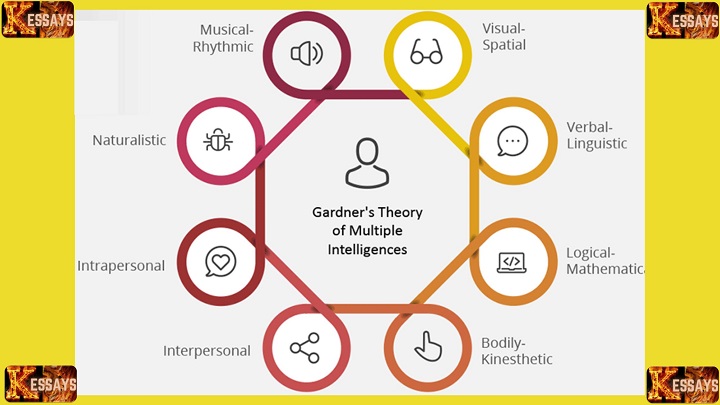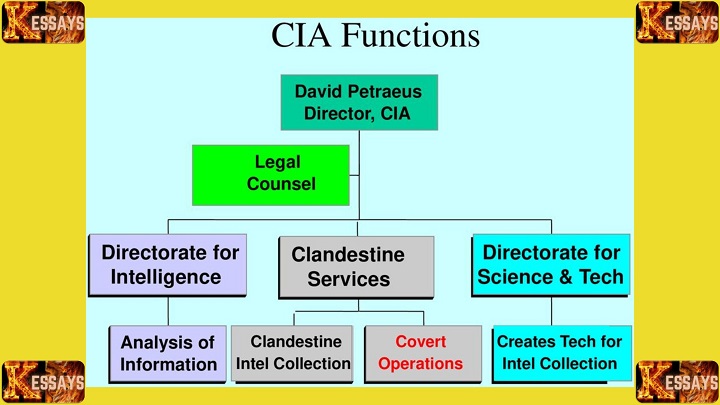I. Introduction to the National Intelligence Model
The National Intelligence Model (NIM) is a fundamental framework employed by governments and intelligence agencies worldwide to effectively gather, analyze, and act upon critical information for national security, law enforcement, and policymaking. The National Intelligence Model (NIM) serves as the backbone of a nation's intelligence efforts, facilitating the coordination and optimization of resources to address various threats and challenges. Understanding the NIM is vital for ensuring the security and well-being of a nation's citizens.
II. Components of the National Intelligence Model
The National Intelligence Model (NIM) comprises several interconnected components, each playing a unique role in the intelligence cycle. These components are essential for effective threat assessment, data collection, analysis, and dissemination of intelligence. The keyword "National Intelligence Model" is emphasized to underscore its importance in the intelligence process.
1. Threat Assessment within the National Intelligence Model
The foundation of the National Intelligence Model lies in a comprehensive threat assessment. This initial step involves identifying potential risks, adversaries, and vulnerabilities that could pose a threat to national security and stability. The NIM ensures that intelligence agencies have a clear understanding of the challenges they face.
Example 1 (National Intelligence Model):
Imagine a nation's intelligence agencies conducting a thorough threat assessment. They analyze information related to political instability, economic factors, and social unrest in a neighboring country. This assessment allows them to anticipate potential security threats, such as border disputes or refugee movements, and take proactive measures to address them.
2. Intelligence Collection in the National Intelligence Model
Intelligence agencies gather information through various means, including human intelligence (HUMINT), signals intelligence (SIGINT), and open-source intelligence (OSINT). This diverse collection approach is vital for building a comprehensive knowledge base.
Example 2 (National Intelligence Model):
Within the framework of the National Intelligence Model, consider intelligence agencies monitoring communications of a foreign terrorist organization using SIGINT. By intercepting and deciphering encrypted messages, they gain valuable insights into the organization's plans and intentions. This intelligence collection effort helps assess threats and formulate effective counterterrorism strategies.

3. Analysis and Fusion in the National Intelligence Model
The National Intelligence Model places great emphasis on analysis and fusion. Intelligence analysts play a critical role in evaluating and interpreting the data collected from multiple sources. They fuse this information to create a coherent intelligence picture, enabling a deeper understanding of the intentions, capabilities, and strategies of adversaries.
Example 3 (National Intelligence Model):
Suppose intelligence agencies receive data from HUMINT sources, satellite imagery (GEOINT), and
intercepted communications (SIGINT). Analysts within the NIM framework work collaboratively to assess the significance of these data points. By connecting the dots, they uncover a pattern suggesting a potential cyberattack by a foreign nation. This analysis informs policymakers and military leaders, allowing them to prepare and respond accordingly.
4. Dissemination of Intelligence within the National Intelligence Model
Effective dissemination of intelligence is a cornerstone of the National Intelligence Model. Once intelligence is analyzed and assessed, it is disseminated to relevant stakeholders. This timely and accurate sharing of information ensures that decision-makers, including policymakers, law enforcement agencies, and military commanders, are well-informed and can make sound judgments.
Example 4 (National Intelligence Model):
Consider a scenario where intelligence agencies uncover credible information about an impending terrorist attack. Within the National Intelligence Model, this critical intelligence is promptly disseminated to law enforcement agencies, border security forces, and relevant government officials. Timely dissemination enables swift actions to prevent the attack, protecting lives and maintaining national security. The National Intelligence Model, with its components of threat assessment, intelligence collection, analysis, and dissemination, forms the backbone of effective intelligence efforts.
III. Practical Applications of the National Intelligence Model
The National Intelligence Model (NIM) serves as a versatile framework with practical applications across various domains, ensuring national security and public safety. These applications are crucial for addressing contemporary threats and challenges while emphasizing the importance of the NIM.
5. Counterterrorism:
Within the National Intelligence Model, governments employ robust counterterrorism efforts to combat terrorist organizations effectively. This involves identifying, tracking, and disrupting the activities of such groups, ultimately preventing potential attacks.
Example 5 (National Intelligence Model):
Imagine intelligence agencies utilizing the NIM to uncover vital information about a planned terrorist attack on a transportation hub. This actionable intelligence allows law enforcement to swiftly intervene, apprehend suspects, and dismantle the terrorist network, saving lives and maintaining security.
In the digital age, the NIM plays a pivotal role in safeguarding critical infrastructure and networks from cyber threats. Intelligence agencies leverage the NIM to identify cyber adversaries and proactively protect against cyberattacks.
Example 6 (National Intelligence Model):
Through the application of the NIM, a nation's intelligence agencies detect a state-sponsored hacking group targeting its power grid. Armed with actionable cyber threat intelligence, the nation implements countermeasures, enhances its cybersecurity posture, and successfully defends against the imminent threat.
7. Counterintelligence:
Countering espionage and safeguarding national secrets are paramount objectives within the National Intelligence Model. The NIM aids in identifying foreign intelligence operatives and their activities within the country.
Example 7 (National Intelligence Model):
Intelligence agencies, operating under the NIM framework, unveil the presence of a foreign intelligence agent clandestinely operating within their country. Swift counterintelligence measures are initiated, leading to the agent's apprehension and the protection of sensitive national information.

IV. Continuous Improvement and Adaptation
The National Intelligence Model (NIM) is a dynamic framework that continuously evolves to address emerging threats and challenges. Intelligence agencies recognize the importance of adapting their methodologies, technologies, and capabilities to stay ahead of adversaries.
8. Emerging Threats and the NIM:
As new threats emerge on the global stage, the NIM remains flexible and adaptable, incorporating these evolving challenges into the intelligence cycle.
Example 8 (National Intelligence Model):
Intelligence agencies worldwide acknowledge the growing threat of deepfake technology, which can be used for disinformation campaigns with severe consequences. Within the NIM framework, agencies adapt by integrating advanced detection methods for deepfakes into their intelligence collection and analysis. This proactive approach ensures that disinformation efforts using deepfake technology are swiftly identified and countered.
9. Technological Advancements and the NIM:
Intelligence agencies leverage cutting-edge technologies to enhance their data collection, analysis, and dissemination capabilities. In an era of rapid technological advancement, the NIM remains at the forefront of utilizing these innovations.
Example 9 (National Intelligence Model):
Within the NIM framework, intelligence agencies harness the power of artificial intelligence (AI) and big data analytics. AI-driven algorithms process vast amounts of data, enabling agencies to detect patterns related to cyberattacks quickly. This technological integration accelerates the identification of potential threats, allowing for timely responses to mitigate cybersecurity risks.
The NIM's commitment to continuous improvement and adaptation ensures that intelligence agencies can effectively address emerging threats and harness the advantages of evolving technologies. By emphasizing flexibility and innovation, the NIM remains a formidable tool for safeguarding national security and countering adversaries.
V. International Collaboration
In an interconnected world, collaboration with foreign intelligence agencies is essential. The NIM extends beyond national borders to share intelligence and address transnational threats.
10. Multinational Operations
The NIM is employed in multinational intelligence operations to combat threats that transcend borders, such as organized crime or global terrorism.
Example 7 (National Intelligence Model):
Intelligence agencies from multiple countries collaborate using the NIM to dismantle an international drug trafficking syndicate. The shared intelligence leads to successful arrests and asset seizures.
VI. Ethical Considerations
Ethical principles, including respect for privacy and human rights, are integral to the National Intelligence Model (NIM). Maintaining a balance between security imperatives and individual freedoms and civil liberties is a fundamental aspect of the NIM's ethical framework.
11. Oversight and Accountability:
To ensure that intelligence activities conducted under the NIM align with legal and ethical standards, nations establish oversight mechanisms. These mechanisms play a crucial role in maintaining transparency, accountability, and adherence to ethical guidelines.
Example 11 (National Intelligence Model):
Imagine a scenario where a parliamentary committee, established under the NIM framework, conducts regular reviews of intelligence agencies' activities. These reviews aim to verify that agencies operate within the boundaries of legal and ethical guidelines while fulfilling their national security mandates. This oversight mechanism ensures that intelligence efforts prioritize ethical considerations, respecting the rights and privacy of individuals.
VII. Future Challenges and Adaptations
The National Intelligence Model (NIM) remains resilient but faces ongoing challenges in a rapidly evolving landscape. Adapting to emerging technologies, ethical dilemmas, and evolving threat landscapes is essential for its continued effectiveness.
12. Artificial Intelligence and Automation:
The integration of artificial intelligence (AI) and automation into intelligence processes presents both opportunities and challenges. While AI enhances data analysis capabilities, ethical concerns about bias and privacy must be addressed within the NIM.
Example 12 (National Intelligence Model):
Consider intelligence agencies using AI within the NIM to analyze social media data for potential threat indicators. While AI-driven analysis can yield valuable insights, ethical concerns arise regarding the collection and use of personal information. Adapting to this challenge within the NIM involves implementing strict ethical guidelines to protect individual privacy while maintaining national security.
13. Disinformation and Influence Campaigns:
The NIM must continually evolve to counter disinformation and influence campaigns that exploit social media and digital platforms to manipulate public opinion and destabilize societies.
Example 13 (National Intelligence Model):
Intelligence agencies operating within the NIM recognize the growing threat of foreign disinformation campaigns targeting democratic processes. Through the NIM framework, agencies employ advanced monitoring and analysis techniques to detect and counter such campaigns. By identifying false narratives and their sources, agencies can actively mitigate the impact of disinformation on public opinion and democratic institutions.

VIII. Conclusion: The Ongoing Relevance of the National Intelligence Model
In conclusion, the National Intelligence Model remains a critical framework for safeguarding national security, countering threats, and promoting public safety in an ever-evolving world. Its adaptability, ethical considerations, and international collaboration are essential to addressing contemporary challenges and ensuring the well-being of nations and their citizens. The NIM, underpinned by the keyword "National Intelligence Model," continues to be the cornerstone of effective intelligence efforts worldwide.



Comments are closed!